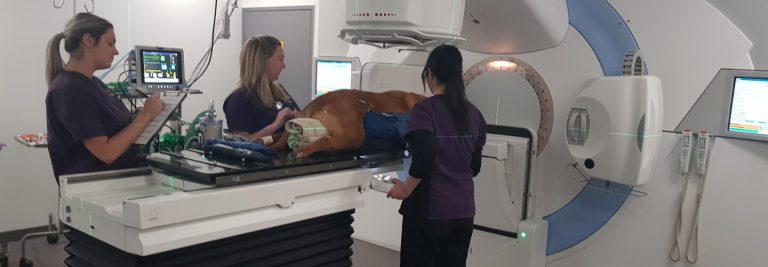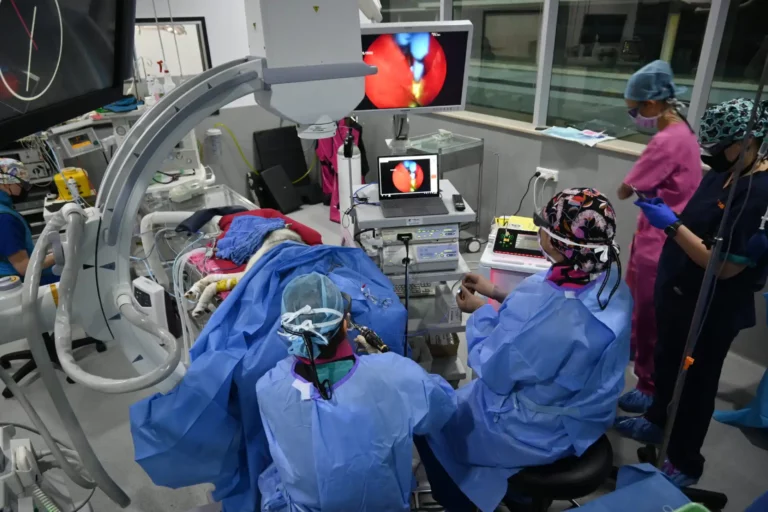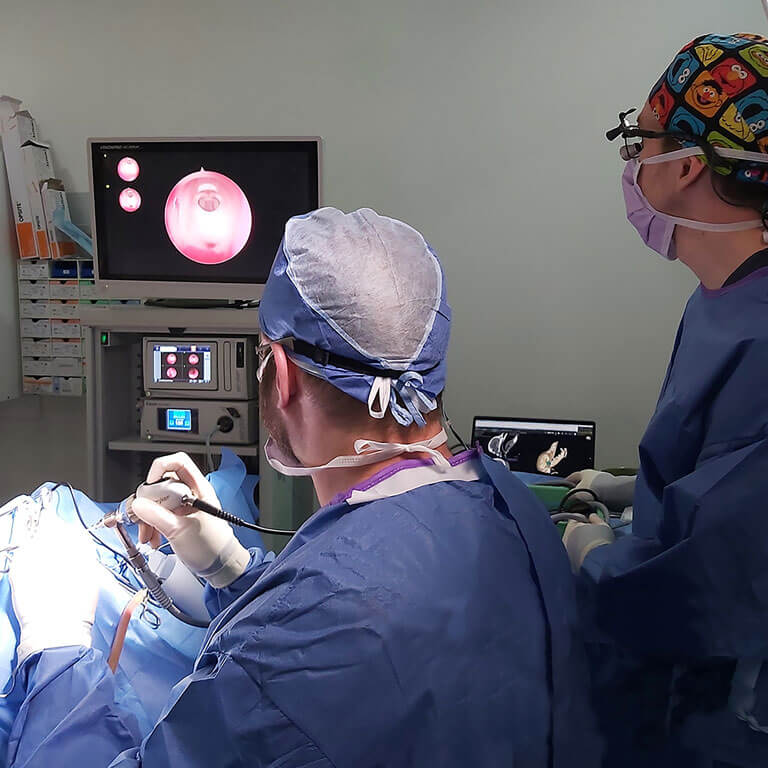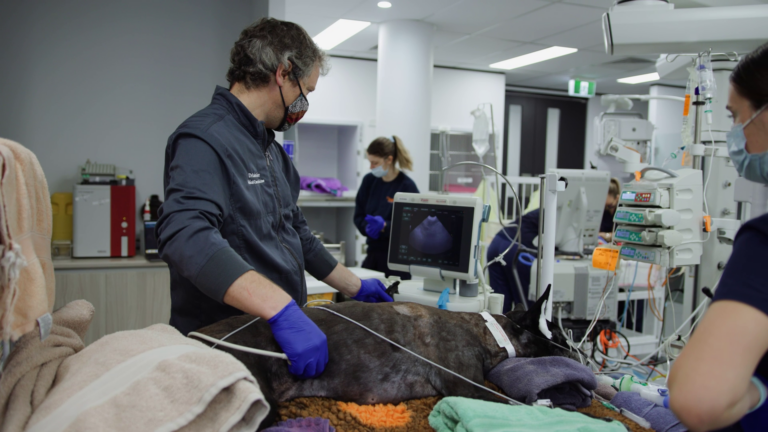What is patella luxation in Dogs?
Patella luxation (dislocation) of the patella (kneecap) is a common condition of dogs, especially smaller breeds.
The patella is part of the quadriceps muscle unit on the front of the thigh that extends the stifle (knee). It is a small bone that is designed to glide in a groove on the bottom of the femur (thigh bone). Patella luxation is when the bone dislocates from the groove as can be seen in the CT scan picture on the right below.
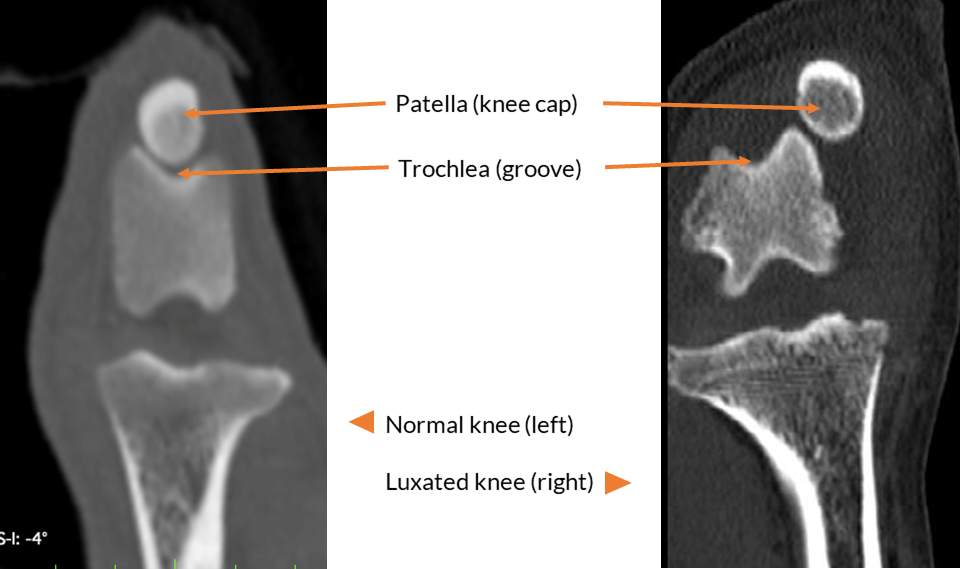
What causes patella luxation in dogs?
Dogs can be born with patella luxation, or it can also arise from injury. Luxation usually occurs when there is misalignment of parts of the leg, where the quadriceps muscles, trochlea (patella groove), and the tendon attachment on to the tibia bone are not in a straight line. This can be seen in the diagram below where the right patella is luxated.
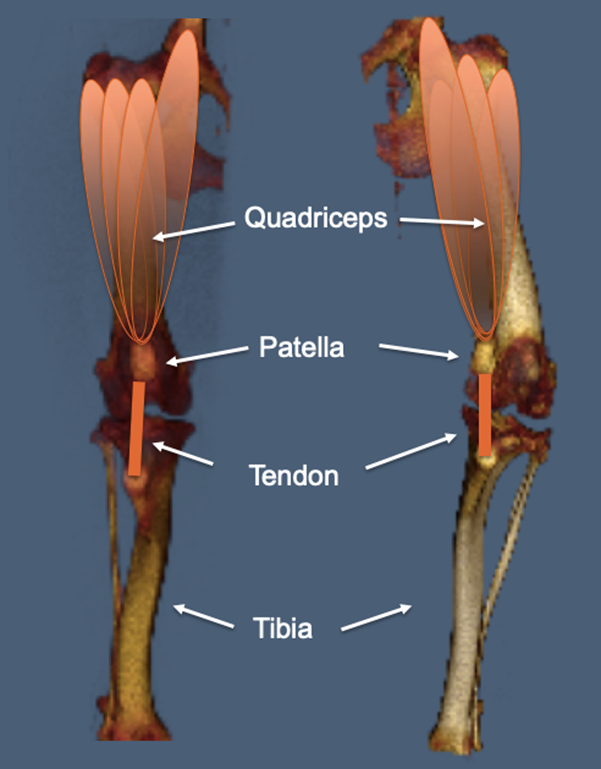
Luxation can be graded, with higher levels being more severe. Grade 1 patella luxation is when the kneecap can be pushed out of the groove but otherwise slides within the groove. This is functionally normal and is never treated. Grade 2 luxation is when the kneecap slips in and out of the groove spontaneously. Grade 3 is when the kneecap sits outside the groove all the time, unless it is manually pushed back into the groove. Grade 4 (the worst grade) is when the kneecap sits outside the groove and cannot be pushed back into the groove.
What are patella luxation symptoms in dogs?
Patients can be mostly normal with lower grade luxations. With Grade 2, a characteristic skip or hop can be seen, and then resolves a couple of steps later when it pops back in. Higher grade luxations are often associated with more constant lameness which can worsen over time as the cartilage is worn off the patella.
Patella luxation treatment
In the past, low grade (especially Grade 2) patella luxations with rare or mild signs have not been treated. However, more recent evidence has shown that if left untreated, the condition gradually worsens over time to a point where surgery is required.
Moderate and high-grade luxations are treated with surgery. Surgical procedures can either aim to change the tension in the soft tissues or realign the patella with its groove. Realignment can be achieved through cutting and moving parts of the bones, or by deepening the groove to better hold the bone in place (trochleoplasty). The majority of patients will have their patella stabilised effectively with a trochleoplasty. Whereas, some more severe luxations will require more extensive realignment of the bones and joints.
SASH surgeons have been involved in extensive clinical and laboratory-based research to understand how to determine which procedures for is best for each individual patient. The selection of procedure is based on which will give the best likely outcome for the case, with the lowest chance of complications.
Patella luxation surgery results
Most dogs will find it difficult to use their operated limb one to two days post-surgery. We expect them to be using it well by their first recheck around ten days after surgery and show little to no lameness by the eight-week assessment.
Caring for a dog after patella luxation surgery
It is important for patients to avoid any vigorous activity until the bone has healed – this can usually be seen on X-rays at about the eight-week mark. This means that running and jumping activity must be avoided. However, a program of controlled walking is suitable. The type of management required to control activity varies between patients and their home environments with some dogs requiring crate or cage confinement while others can move sensibly about the house.
Every patient receiving orthopaedic surgery (such as patella luxation surgery) at SASH will receive rehab therapy at the Sports Medicine & Rehabilitation department as part of their post-operative recovery phase before discharge from hospital. We also recommend continuing rehab as an out-patient once your dog has been discharged.
Occasionally the fine pins placed during surgery will need to be removed due to tissue irritation. This occurs after bone healing.
